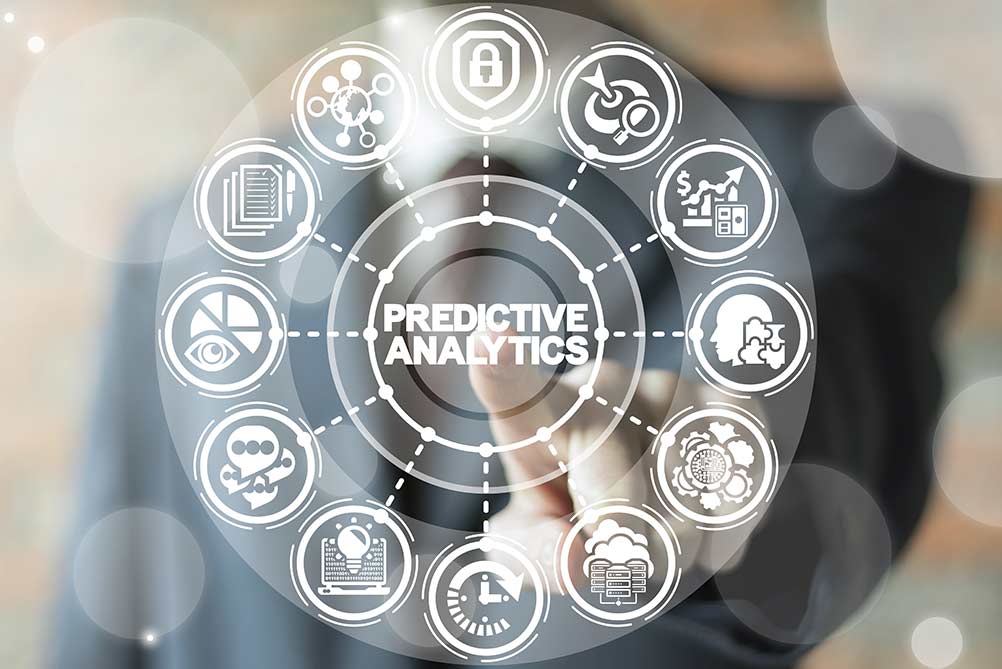
It’s the rare industry that isn’t currently obsessed with data. In fact, so much is collected it becomes “big data.” And it is certainly powerful information, providing an edge in competitive markets. But large data sets alone don’t help companies and organizations plan for the future. It’s complex, bulky, and not always particularly revealing. So what does Predictive Analytics do? It transforms large amounts of data from opaque mysteries into accurate guides that inform decisions and make future success more likely.
What is Predictive Analytics?
With Predictive Analytics, huge tranches of data are used to build algorithms. These mathematical models use the collected information to identify and anticipate trends, allowing cutting edge companies to enter new markets, reverse course, or capture new opportunities before their competitors do.
Data-driven predictive models aren’t simply about avoiding pitfalls or seeing future behavior before anyone else. Long-standing, seemingly intractable problems can be solved with them, because Predictive Analytics can reveal new ways to solve age-old issues.
The smartest companies use Predictive Analytics to do more than simply spot the next big thing. By analyzing past behavior, organizations can understand and learn from factors that are incremental business drivers, and identify gaps that could result in missed opportunities.
What is driving Predictive Analytics?
In today’s hyper-competitive, need-it-now business environment, accurate forecasting can actually be the difference between rapid growth and sudden decline. More and more, the edge goes to organizations that are positioned to take advantage of opportunities before others do, and resolve bottlenecks before they hinder their business.
Let’s say you sell a product that suddenly explodes in popularity. With Predictive Analytics, you would have seen indications that a rapid increase in sales volume was in the making. What’s more, it would help you construct a supply chain that was positioned to respond and maximize the opportunity.
Data let’s people make decisions that are grounded in real-time information, relying on facts and past results instead of their instincts. While “trust your gut” may sound like solid advice, business is more complex than ever before. Consumers are more fickle. And technology brings change at a pace never seen before. That makes data, when it’s interpreted correctly, far more powerful than intuition.
How does Predictive Analytics work?
The process for sound Predictive Analytics starts with the data itself, collected from a wide range of sources—spreadsheets, internet archives, established databases, software monitors. These data include both first party data that a company owns, curates and manages as well as externally sourced control data to account for market influences that can significantly impact the business like economic, weather, or customer demographic factors.
But that’s just the start. The data needs to be cleaned, with outliers and redundancies eliminated to create a more accurate profile of the information. Once that is completed, a predictive model is built, using a variety of approaches ranging from a simple regression to more complex machine learning applications. When an industry is complex, more variables are introduced. Once the model is created, it should be validated against past results and holdout samples, corroborated with other available models/analyses, and continually monitored for accuracy.
How can Predictive Analytics be used?
So what does Predictive Analytics do? A lot.
And virtually every industry has good reasons to deploy it.
Take the automotive industry, where data can be used to build new safety features into cars or create the software that can lead to autonomous vehicles.
Or consider retail. It’s more challenging than ever before to keep up with the constantly evolving tastes of today’s consumers. An item can go from stone-cold to red-hot as a result of a meme, a celebrity endorsement, or a TikTok video. A well-built model may not be able to track the rise of every trend—the teenage psyche, for instance, is tricky—but it can give brands the ability to build a supply chain that is agile and responsive.
Financial services rely on Predictive Analytics extensively. Determining the credit risk of investments, companies, and individuals is most accurate when extensive data points are collected and properly analyzed.
Of course, we all had a crash course in Predictive Analytics recently. During the COVID-19 pandemic, public health decision-makers relied on data and accurate interpretations of it.
Predictive Analytics can help any business work more efficiently and more profitably. Fact is, as the tools and the technology continue to advance, the question will change. We’ll stop asking, “What can Predictive Analytics do?” And start asking, “What can’t it do?”
